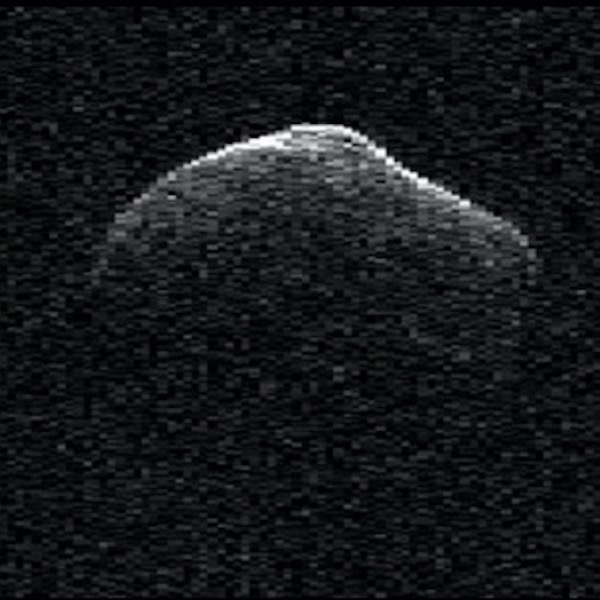
These two images taken by NASA’s Hubble Space Telescope show Comet 252P/LINEAR as it passed by Earth in March, 2016. The visit was one of the closest known encounters between a comet and our planet. The images reveal a narrow, well-defined jet of dust ejected by the comet’s icy, fragile nucleus, or core. Because the core of the comet is spinning, the jet also appears to change direction in the images. NASA said:
The spinning nucleus makes the jet appear to rotate like the water jet from a rotating lawn sprinkler.
Click here to see a third image in this sequence.
Meanwhile, the comet’s nucleus itself was too small for Hubble to resolve. Although comets can produce tails that extend millions of miles in space, their nuclei are very tiny, in this case probably less than one mile (1.6 km) across.
A comet produces jets of material as it travels close to the sun in its orbit. Sunlight warms ices in a comet’s nucleus, resulting in large amounts of dust and gas being ejected, sometimes in the form of jets. The jet in the Hubble images is illuminated by sunlight.
The images underscore the dynamics and volatility of a comet’s fragile nucleus.
Hubble captured the images on April 4, 2016, roughly two weeks after the icy visitor made its closest approach to Earth on March 21. The comet traveled within 3.3 million miles (over 5 million km) of Earth, or about 14 times the distance between our planet and the moon.
These observations – taken with Hubble’s Wide Field Camera 3 – also represent the closest celestial object Hubble has observed, other than the moon.
Comet 252P/LINEAR is traveling away from Earth and the sun; its orbit will bring it back to the inner solar system in 2021, but not anywhere close to Earth.
Via HubbleSite
Bottom line: Hubble Space Telescope images of Comet 252P/LINEAR, which passed exceedingly near the Earth. The images show that a jet extending from the comet’s nucleus is rotating as the nucleus spins.











